The purity of water is significant in various endeavors, from scientific research to potable and domestic uses. It is for this reason, among others, that many people regard distilled water as the purest, with the water still undergoing a multitude of steps to remove any sort of impurities and contaminants. However, in the context of the rising use of dehumidifiers at home and in offices, one may wonder what is the most important question- can the water collected from a dehumidifier be used instead of distilled water? This article identifies these variations between the two water types above, focusing more on their methods of collection, dehumidifier water applications, and limitations.
What is the difference between dehumidifier water and distilled water?
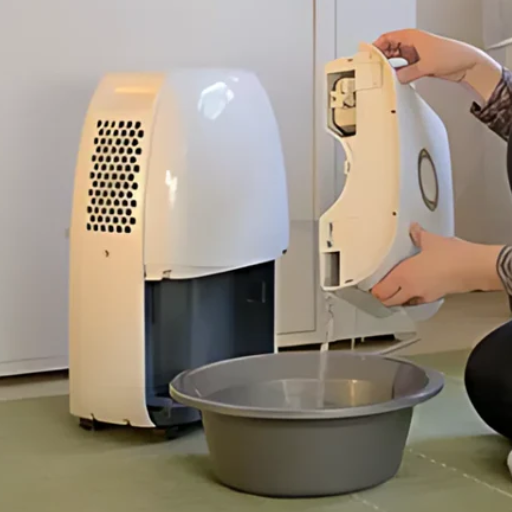
As the appliance works to dehumidify the air, water is extracted from the atmosphere via condensation. The water collected appears clean, but it is actually filled with microorganisms, dust and other particulates. Unlike dehumidifier water which is untreaten unfits for drinking, distilled water goes through a rigorous stistillation process where water is boiled into steam and then condensed back into a liquid, which removes any impurities and dust making it a purer solution. As a result, distilled water is suitable for sensitive utensils such as those used in laboratories or by medical professionals.
Analyzing the condensation procedure in dehumidifiers
The condensation activity used in dehumidifiers consists of taking heated air and passing it over coils, the temperature of which is maintained lower than the dew point of the air. In doing so, moisture vaporized in the air is collected in the form of liquid water and stored in a reservoir or drained out. Important technical parameters are the operating temperature limits which, in this case, are set between 41 °F (5 °C) and 95 °F (35 °C), and the moisture collection capacity which is expressed in pints or liters per day. Much is usually given as energy factor (EF), which is approximately 1.5 – 2.0 liters per kilowatt-hour for these models. This maintenance is critical to minimize or eliminate accumulated contaminants in water condensation.
The production process of distilled water
Water distillation is separating pure water from a mixture by heating it to boiling point. Its vaporized state is redirected into a condenser where it cools off into liquid water. The purified water is called distilled water and is free from most of the contaminants within the mixture. The water is kept under standard atmospheric pressure and heated to 100 degrees Celsius – this is necessary because it is the boiling point of water. The heating system’s thermal efficiency rate plays a crucial role in how fast the condenser cools the water. The energy rate fed to the system is also essential to measure and keep track of. More advanced systems incorporate mechanisms to recover heat to improve energy efficiency. This is mainly done on a large scale basis. To increase performance, the heater and condenser need to be appropriately maintained. Using these techniques, pure distilled water can be produced and maintained.
Water impurities in dehumidifier versus distilled water
The dehumidifier water is a product that is likely to be contaminated with particles like mold spores, dust, and even microorganisms, as it is collected straight from the atmosphere through condensation. It is also important to highlight that these sorts of water are not treated to eliminate those impurities and, therefore, pose a danger if ingested. At the same time, distilled water is produced through an evaporation and condensation process that removes all the impurities, organic compounds, biological contaminants, and even dissolved salts, which makes it highly pure. Thus, dehumidifier water is always expected to be more contaminated than distilled water, which is technically suitable for drinking, lab procedures, or medical purposes where sterilized water is necessary.
Can you drink water from a dehumidifier safely?
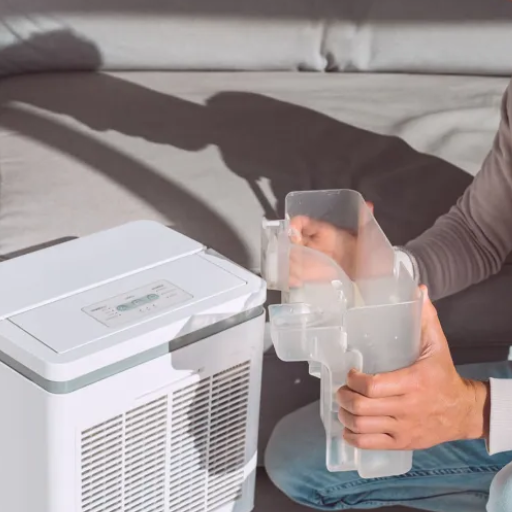
Water obtained from a dehumidifier is not safe for human consumption, as it is derived from condensed air, which may contain harmful pollutants, including dust, bacteria, mold spores, and even heavy metals from its components. Additionally, the collection reservoir may be vulnerable to bacterial growth due to improper sterilization. While dehumidifier water can be used for other purposes like cleaning or watering plants, they must undergo filtration and sterilization before drinking or cooking.
Expected Contaminants Found in Dehumidifier Water
Dehumidifier water contains contaminants that render it unsafe for human consumption. These contaminants include microorganisms like bacteria, mold, and mildew, which fester within the water-filled dehumidifier and pose a range of health issues without proper sterilization.
Furthermore, other contaminants may include dust and other small objects collected from the air, which remain trapped during condensation due to the absence of a pre-filter. Also, heavy metals like lead or copper may enter the water through the internal parts of a dehumidifier with poor build quality.
Unless advanced filtration and sterilization processes are performed, these contaminants make it impossible to safely consume the water for drinking or cooking purposes. Additionally, due to the pollution levels in the environmental air and the state of the dehumidifier itself, there is substantial variability in the ability to dehumidify water without chemically analyzing or testing it to be safe.
Problems concerning the health from dehumidifier water use
Dehumidifier water usage has several health complications, the most serious of which are microbial and chemical contaminants. Within the device’s wet interior, pathogenic fungi, bacteria and mold may grow and cause gastrointestinal infections. Other substances found within a dehumidifier unit may pose as harmful. Parts may include heavy metals like copper and lead, while airborne particles that get captured during condensation pose as a breathing threat. The consumption of such substances can lead to allergies or in worse cases, toxic exposure. With such a possibility occurring without proper treatment such as thorough filtration, dehydration and capsules becomes a basis on serious health issues.
Alternatives to drinking dehumidifier water
One of the more viable options is to use standard filtered tap water often found in many residences and for which water filtration systems can be installed to optimize it for taste and health. Another more practical alternative, especially in places where potable tap water is not available, is bottled water. For individuals interested in sustainable options, rainwater harvesting can also be an effective backup source for clean water when collected and appropriately treated. Finally, the use of good water purifiers ensures that clean drinking water can be obtained from any source. These approaches all provide a safer and more dependable alternative to drinking the water from a dehumidifier.
How can you use dehumidifier water safely?
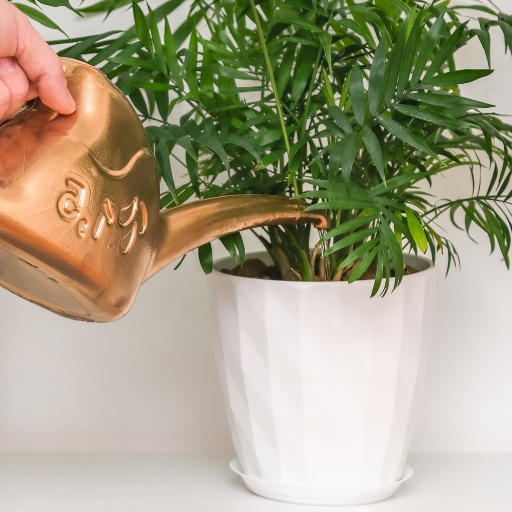
Ensuring the correct water purification before using it from the dehumidifier is essential. The water must first be filtered to remove any particulate matter. This must be followed by boiling or sterilizing the water to eliminate any microorganisms. Water from a dehumidifier can be effectively used for several non-consumptive purposes. These include cleaning, watering non-edible plants, and even in irons with the condition that it has undergone proper filtration. One should note, however, that shift in the usage of dehumidifier water for drinking or cooking should be avoided as it comes with preventable health risks. Lastly, to limit the risk of contamination from mold and bacteria, the dehumidifier must always be cleaned at regular intervals.
Watering plants with dehumidifier water
Dehumidifier water that is not harmful to one’s health can be used for watering non-edible plants, and I do so as well. So first, I filter the water to remove any dust or debris. Then, I make sure to check the dehumidifier as well and more specifically, its condition. Dehumidifiers introduce contaminants to water when they are unclean and moldy. The water is especially beneficial for ornamental plants; however, the same cannot be said for vegetables and herbs that are reduces for consumption due to the risk of metals or impurities accumulating.
Application of dehumidifier water in cleaning activity
Using the water collected from my dehumidifier for cleaning activities is an efficient use of water that might otherwise go to waste. However, while doing so, I filter the collected water to remove any unwanted larger particles. Non-potable water can do mopping floors, scrubbing outdoor furnitures, and cleaning dirty equipment. Still, I tend to avoid using it on places that require high cleanliness levels, like kitchen surfaces, because even after filtration, the water is likely to contain some bacteria or other contaminants.
Other useful functions of the collected water from the dehumidifier
Apart from the ones above, collected water from the dehumidifier can also be used to pour it into toilets, which will help decrease the consumption of fresh water. It is also possible to pour dirty water with soil to wash tools or water compost piles for which moist soil is a must for proper decomposition. Furthermore, this collected water can be used as coolant in some machines or procedures where fresh water is unnecessary. Just as with any other relaxed use of water, its application must be thought out with care as well as proper safety precautions and maintenance procedures.
Is it possible to purify water from a dehumidifier?
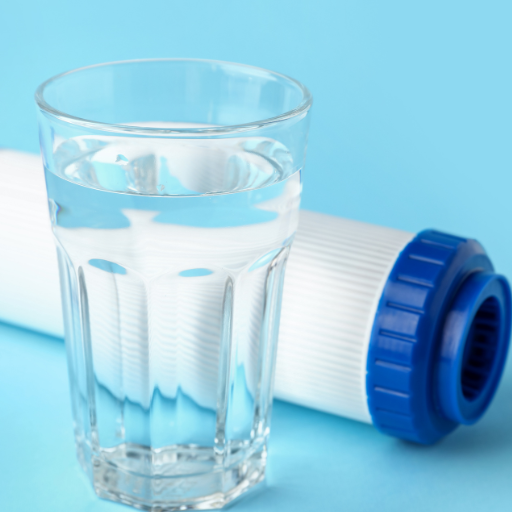
It is feasible to cleanse the water accumulated from an air dehumidifier, but special care ought to be undertaken in its treatment if one intends to make it potable. Contaminants such as dust, mold spores, and even minute fragments from the internal parts of the dehumidifier may be present in the water harvested from the device. As a result, several treatments are needed, which includes fine filters to remove particles, activated carbon to mask any scents or chemicals, and boiling or the use of ultraviolet sterilization to eradicate any microorganisms present in the water. However, the remaining water without active microorganisms may not meet the standard drinking requirements. Thus, its constant use should be looked at with caution.
Methodology for Water Treatment of Dehumidifiers
This involves multiple filtration techniques sequentially. The first step consists of the use of a self cleaning pump. This is done to pass the water through a filter chamber which is capable of retaining a 5 micron sand filter. This would simultaneously remove the larger fouling particles, silt, and suspended impurities. Following this, an activated carbon filter can be utilized to adsorb remaining chlorine along with the organic odors that might be present in the water. The last two treatments can be used interchangeably. The water is either boiled to 100 degrees for 1 minute or ultraviolet sterilization is conducted using levels of 16000 microwatt seconds per centimeter square. These methods are used to kill bacteria, viruses, and other pathogens that can be dangerous to humans.
Moreover, reverse osmosis (RO) filtration needs to be performed to remove the metal ions or chemical contaminants that may be present in water due to the dehumidifier. The pressure level should remain between 40 to 100 psi as the rejection rotes needs to remain above 95% for optimal results. Utilizing the RO system can vastly improve the water’s quality by filtering heavy metals and salts along with contaminants. To maintain the water quality, regular maintenance and replacement of the devices parts like the filters should be conducted.
Distilled Water and Treated Dehumidifier Water: A Comparative Overview
There is a huge difference between the purity of treated dehumidifier water and distilled water, and also their intended uses. Water that has been distilled contains a higher level of purity as it is a product of a process called distillation, which works by boiling water into vapor and condensing it back into a liquid. When in vapor form, contaminants, minerals, and microorganisms are removed, ensuring the distilled water can reach a purity level of 99.9% or higher. Such water is suitable for use in applications requiring uncontaminated water, such as, laboratory experiments, medical devices, and specific industrial processes. Inside a lab, distilled water is the best suitable option.
Treated De-humidifier water is on the contrary, far less pure and has gone through filtration, whereas distilled water has undergone the process of reverse osmosis. The quality of treated water is heavily dependent on the quality of water. For instance reverse osmosis can achieve 95-99% rejection of dissolved impurities, such as heavy metals and salts along with chemicals, however, it may not ever reach the level of purity that distillation possesses.
Treated dehumidifier water is not clean enough for ultra-clean applications; however, it is perfectly safe for non-critical applications where such measures are not required. It is also important to understand the difference in level of purity when the water is intended for various uses.
How much water can a dehumidifier collect per day?
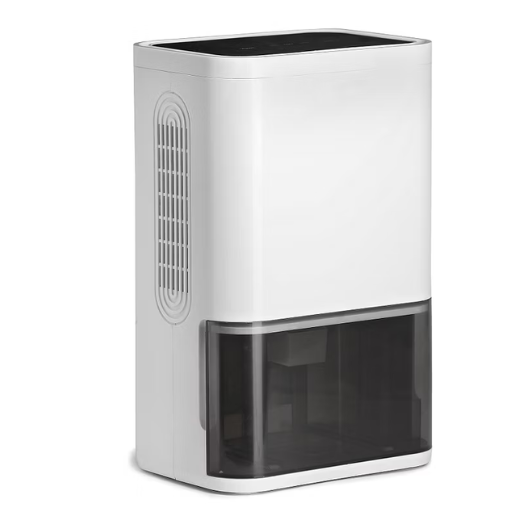
The dehumidifier’s water collection per day is influenced by the humidity of the environment, ambient temperature, and the capacity of the unit itself. Each dehumidifier can collect a specific amount of water in a day. For residential models, the range varies between 20 and 70 pints (approximately 9.5 to 33 liters) and can even go higher for greater-capacity units. The actual performance may be hindered due to factors such as room size and airflow.
Factors affecting dehumidifier water collection rates
- Humidity Levels: The relative humidity provided greatly alters the amount of water a dehumidifier can collect. For example, a room with a humidity of more than 60% will inevitably collect more water than one with lower levels.
- Ambient Temperature: Dehumidifiers are most effective between 65°F and 86°F, which is 18°C to 30°C. If the temperature is lowered too much, the unit’s effectiveness diminishes, along with the dehumidifier’s effectiveness in condensation.
- Dehumidifier Capacity: This indicator reflects the highest water extraction rate when exposed in liters or pints daily. This means that humid and prominent places will require these types of Dehumidifiers because they can extract more moisture.
- Room Size and Airflow: Collection rates are affected by room size and airflow, together with the room space of the dehumidifier. Larger air spaces usually require higher-capacity devices for effective moisture removal. Low airflow can occur if the dehumidifier is misplaced or obstructed by some kind of obstacle, which will also lower its efficiency.
- Type of Dehumidifier: Refrigerant–style dehumidifiers usually work best in warm and humid conditions compared to desiccant models. But in colder climates with low humidity, the desiccant units outperform. Thus, each type has different workings depending on the surroundings.
Knowledge and consideration of these parameters will always ensure better mileage and appropriate dehumidifier selection for use. Aside from other conditions, a 50-pint dehumidifier at 80 degrees Fahrenheit and 60 percent relative humidity will collect more water over time than the same unit in a cooler, drier environment.
Average water collection amounts for different dehumidifier sizes
Dehumidifiers vary in their water collection capabilities, which are averaged concerning the device’s size and its operation conditions. Models with smaller capacity, which are common to find from 20-30 pints, are best for small rooms or mid-range humid areas and are expected to remove roughly 20-30 pints from the environment in a day at conditions of 80 degrees Fahrenheit and 60% relative humidity. Medium capacity units labeled to collect around 40 to 50 pints are meant for medium spaces or areas with higher humidity. They are expected to handle around 40-50 pints daily under similar conditions. Large capacity dehumidifiers, rated around 60 pints or larger, tend to work best in more excellent spaces prone to high humidity, often collecting more than 60 pints of water in a single day.
These values are obtained from performance figures obtained in controlled laboratory environments (example 80°F and 60% RH) and actual use may differ in effectiveness. Other added room levels of temperature and humidity, airflow rate, and the place where the device is situates may disrupt the average water extraction rates. To avoid wasting extra resources, choosing the dehumidifier that will perform best in the room it’s placed in is recommended.
What are the best practices for maintaining a dehumidifier for clean water collection?
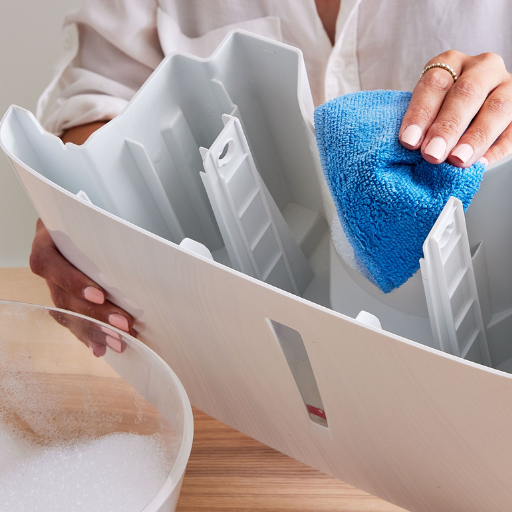
To achieve clean water collection and best results from a dehumidifier, wash the water collection bucket daily to avoid mold and bacteria accumulation. Follow the manufacturer’s instructions on air filter cleaning or replacement so airborne particles do not get sucked in and do efficient airflow is maintained. Periodically, remove any dust or debris collected on the coils so that the proper functionality is not impaired. Always position the dehumidifier within a room with good ventilation while also ensuring the appliance is at an even level to avoid water collection spillage. Moreover, if there are any components within the humidifier, use distilled water to reduce mineral deposits. Following these steps will ensure cool water, as well as increasing the lifespan of the unit.
Tips on regular cleaning and maintenance
- Regularly empty and wash the water collection bucket to stop mold and bacteria from growing.
- Ensure the air filter is clean so optimal airflow can be maintained and airborne contaminants can be reduced.
- Remove dust and debris collected on the unit’s exterior with a damp cloth.
- Constantly check the coils and remove any dust or grime that has collected to maintain proper efficiency.
- For the dehumidifier to work properly, it is advisable to position it in a free space with unobstructed air flow.
Containing the formation of bacteria and mold in a dehumidifier
The use of a dehumidifier requires disinfection measures to prevent both mold and bacteria from being a concern. Clean the tank that collects water on a consistent routine to minimize and eliminate foreign materials that may support the growth of microorganisms. Ideally, this should be done every 2-3 days. A reasonable concentration of a detergent or, even better, a white vinegar solution effectively cleans the tank. Make sure to dry up the tank thoroughly before putting it back. The air filter also should have maintenance attention. Cleaning or changing it at the minimum monthly ensures minimum bacteria in the air and proper air circulation. Dirt restricts the normal functioning of the dehumidifier and promotes the growth of microorganisms; thus its coils must be kept clean. Most importantly, the appliance must be kept in a humidity range of 30 to 50% so that mold and bacteria do not thrive.
Reference sources
Frequently Asked Questions (FAQs)
Q: Is it safe to drink the water from a dehumidifier?
A: No, it is not safe to drink the water collected from a dehumidifier. While the condensate may appear clean, it can contain harmful bacteria, mold spores, and potentially toxic metals. Unlike distilled water, which is produced through a controlled process, dehumidifier water is not purified and should not be consumed.
Q: How pure is water from a dehumidifier compared to distilled water?
A: Water from a dehumidifier is not as pure as distilled water. While both are derived from water vapor in the air, distilled water undergoes a specific purification process. Dehumidifier water, on the other hand, may contain contaminants from the air and the machine itself, making it less pure and not comparable to distilled water in terms of quality.
Q: Can I use the water from my dehumidifier for other purposes?
A: Yes, you can use the water from your dehumidifier for certain non-consumption purposes. The collected water can be used for watering plants, ironing clothes, or cleaning outdoor areas. However, it’s important to remember that this water is not purified and may contain contaminants, so it should not be used for drinking, cooking, or personal hygiene.
Q: How much water can a dehumidifier collect per day?
A: The amount of water a dehumidifier can collect varies depending on the model and the humidity levels in your environment. Some dehumidifiers, can collect up to several litres of water per day in high-humidity conditions. The exact amount will depend on factors such as room size, temperature, and the amount of water vapor in the air.
Q: Is water from a compressor type dehumidifier different from other types?
A: While the basic principle is the same, water from a compressor type dehumidifier may contain additional contaminants compared to other types. Compressor dehumidifiers use a refrigeration system that can introduce traces of oil or other mechanical components into the water. This makes the water from compressor dehumidifiers generally less pure than that from desiccant or thermoelectric models.
Q: How does the composition of dehumidifier water compare to tap water?
A: Dehumidifier water and tap water have different compositions. Tap water is treated and often contains added minerals and chemicals for safety and taste. Dehumidifier water, being condensed from air moisture, lacks these additives but may contain airborne contaminants and particles from the dehumidifier itself. Therefore, the composition of dehumidifier water can vary greatly and is generally considered less consistent and safe than tap water.
Q: Can I use dehumidifier water in my car or for my pets?
A: It’s not recommended to use dehumidifier water in your car’s cooling system or for your pets. The water may contain impurities that could damage your car’s engine or be harmful if ingested by animals. For these applications, it’s best to use clean, treated water or specifically designed fluids to ensure safety and proper function.



